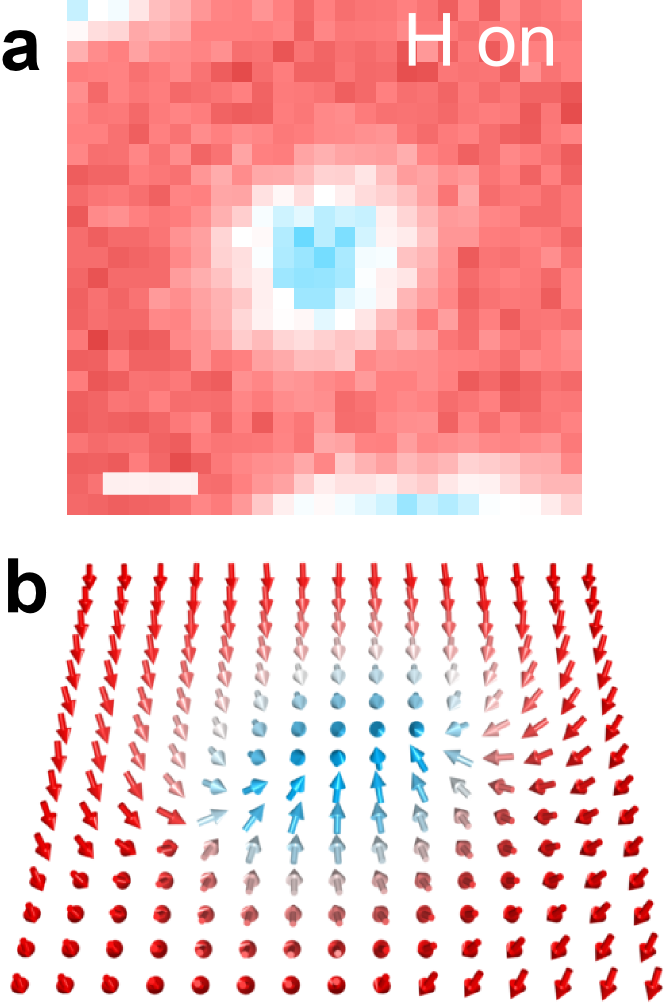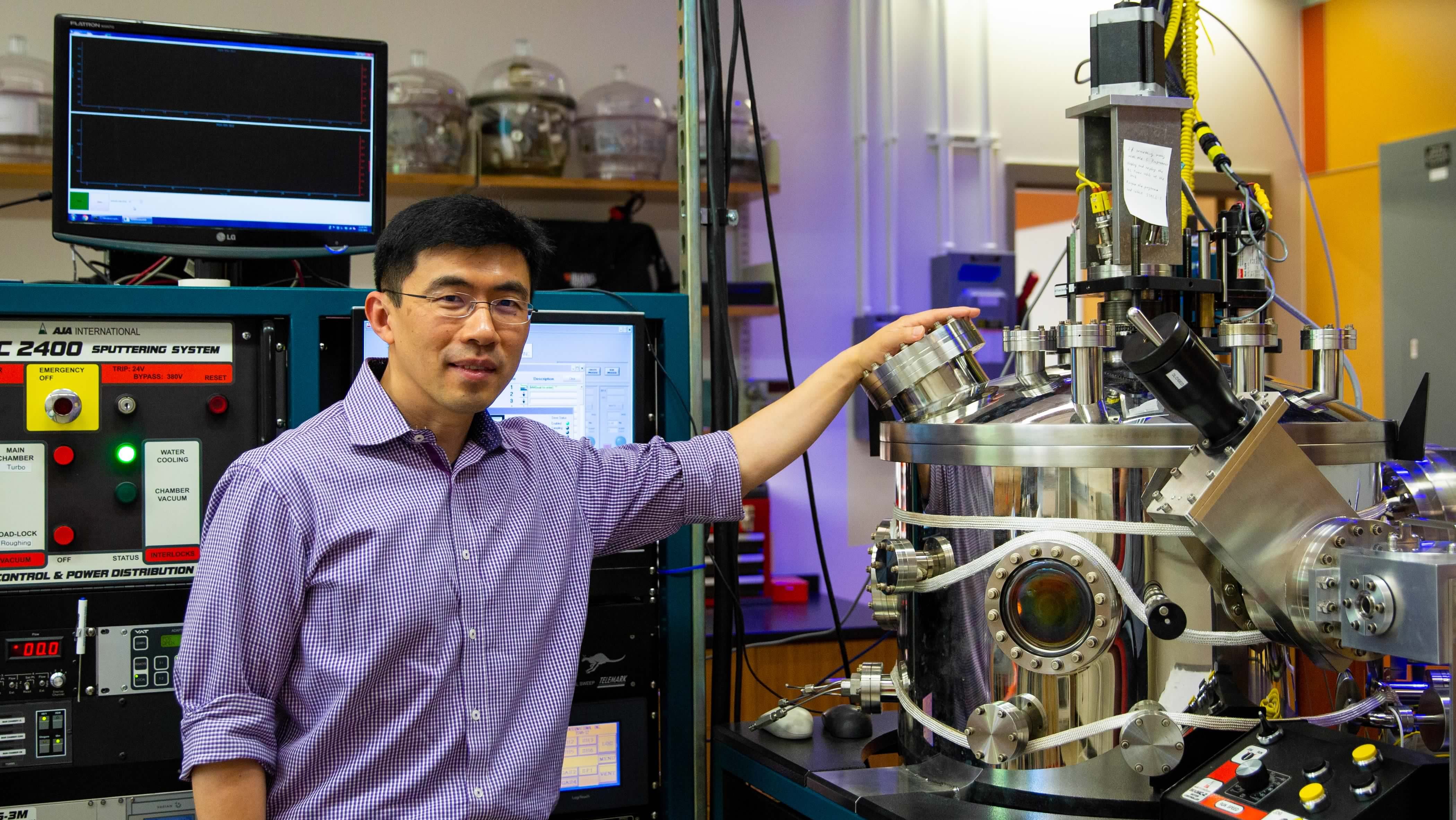Striving for a Sustainable Future with Materials Science
Kai Liu wants to future-proof your magnetic technology.
Many of the products that define modern life, from smartphones to high-speed trains, rely on scarce resources, the extraction of which has a high toll in both environmental and economic terms. To create greener technology we don’t just need to reevaluate our tools, we need to build a larger toolbox, according to Liu, Professor and McDevitt Chair of Physics at Georgetown University’s College of Arts and Sciences.
“It’s exciting because it’s a whole new world,” says Liu, “We have the ability to build up new materials at the atomic level and they often exhibit novel properties beyond those known in their bulk forms.”
There’s Nothing Boring About Boron
Liu’s research group recently received funding from 5E Advanced Materials, a Houston-based company whose California operations include solution extraction of boron and the production of boron advanced materials. With this funding, Liu’s team will explore how boron could help achieve new types of permanent magnets using earth-abundant elements.
“Permanent magnets are used everywhere – in hybrid /electric vehicles, magnetically levitated trains, wind turbines, power storage, and consumer electronics,” Liu says. “But the rare earth elements they rely on are difficult to mine and, due to supply chain issues, prone to wild price fluctuations. There’s a huge need to find replacements that use less, or even no, rare earth elements.”
Liu’s research team hopes that boron-based magnets can emulate similar, or even superior, properties compared to those that use rare-earth metals without the high cost of extraction – reducing the carbon footprint of producing permanent magnets. That would help make cutting-edge technology widely available and keep the production process more environmentally sustainable.
Exploring New Types of Magnetic Recording Media
Changing the way we store information in computers is another area where Liu sees the opportunity for significant improvement. Areal density in magnetic recording media has enjoyed tremendous growth in recent decades. A key property that enables digital information to be stored in ever-shrinking nanoscale magnets is the ability of each bit to maintain its magnetic moment, known as the magnetic anisotropy. Current magnetic recording media contain precious metals. It is much more desirable to find sustainable alternatives using earth-abundant elements.
Liu and a colleague, Gen Yin, an assistant professor in the Department of Physics, have just been awarded a grant from the National Science Foundation on magnetic recording media studies using a high entropy route to achieve novel magnetic alloys. Such alloys contain multiple elements, and interestingly they could form stable structures with enhanced properties. Liu and Yin will use this approach to develop novel phases for magnetic recording media applications that cannot be achieved by conventional means.
Pulling Skyrmions out of Thin Air

a. A skyrmion emerges after an atomic layer of hydrogen was introduced on top of Ni/Co/Pd/W film. Scale bar is 100nm. b. Experimentally determined skyrmion structure over the same area. (Credit: Gong Chen).
Finding viable alternatives to rare-earth and precious metals isn’t the only way Liu hopes to future-proof magnetic technology. Earlier this year, Liu’s group led a study published in Nature Communications on magnetic skyrmions. The ramifications of this research could fundamentally change how digital information is stored magnetically.
“We found a new method to introduce topology into the ways nanoscale magnets orient themselves, to form tiny magnetic knots,” Liu says. “Because of the topological protection, the twisting nanomagnets can be excellent information carriers. The energy costs could potentially be orders of magnitude smaller than current technology. It’s a form of sustainable nanoelectronics with high energy-efficiency.”
Magnetic skyrmions are an exotic type of quasi-particles with a whirling configuration. These nano-size anomalies, invisible to the naked eye, are formed by a series of knotted, interlocking magnetic moments. The interlocking nature gives a skyrmion topological protection and stability. Liu’s research team demonstrated a new method of writing and deleting skyrmions, which would correspond to the “1” and “0” state, respectively, at room temperature by introducing a single atomic layer of hydrogen in ultrahigh vacuum onto the surface of a thin magnetic film.
“It’s a completely new way to manipulate skyrmions,” Liu says, “And it’s potentially very useful because it’s a contactless way of writing and deleting information, without the need for numerous electrical leads.”
Throughout Liu’s work is a commitment to finding new materials with novel applications that can solve real-world problems. He likens his approach to cooking in the kitchen.
“We start with a hunch that if we put certain ingredients together, at the atomic level, then the materials might exhibit certain properties,” Liu says. “Sometimes we are right, but oftentimes we are off, or completely wrong. Even then we usually find something fascinating and go from there.”
